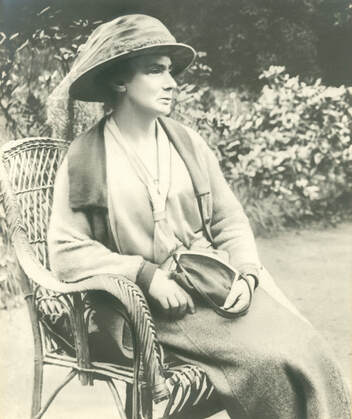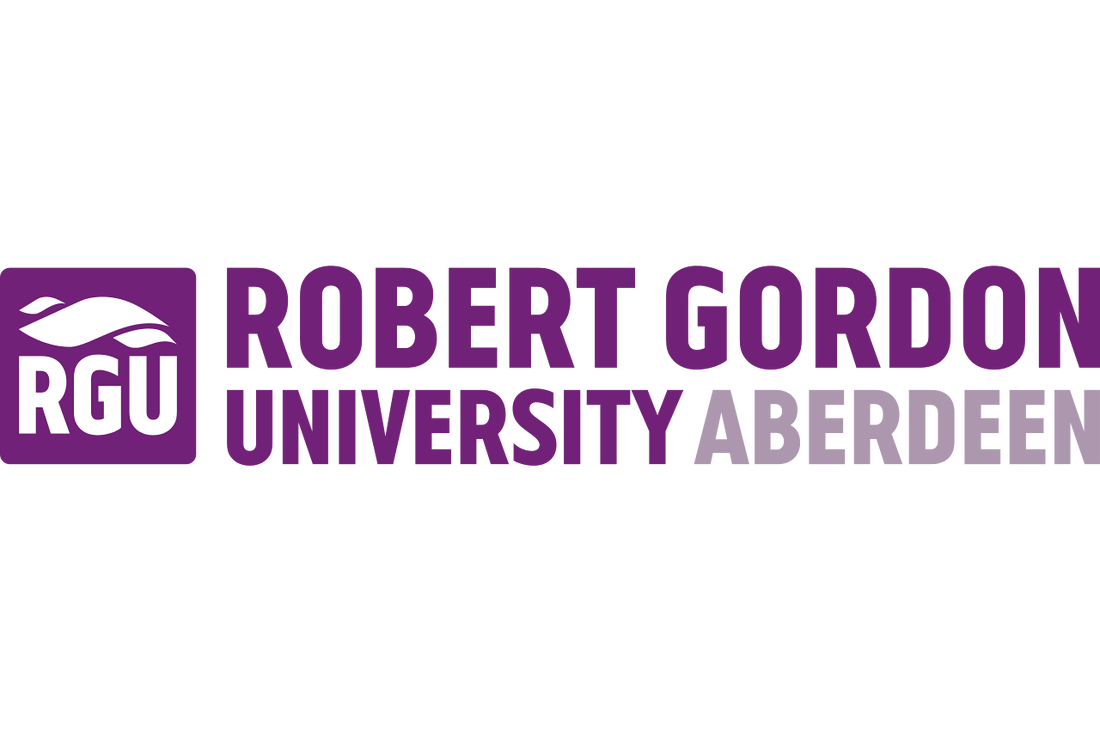MARY SYMON (1863-1938)

Mary Symon was born on 25th September 1863 in Dufftown, the aulest o the twa dothers o John Symon and Isabella Duncan. Her fadder, Provost o Dufftoon in the 1880s, served his time is a saddler bit gotten intae fairmin an hid a haun in the Pittvaich Distillery. He bocht Pittyvaich Hoose fit wis Mary's hame for maist o her life. Mary was squeeled first it Mortlach Public Squeel and then it Edinburgh Institute for Young Ladies far her English dominie wis James Logie Robertson, fa scrived in Scots as Hugh Halliburton and clearly influenced the later scrievin o his protégé quine. She went tae classes at Edinburgh Varsity and graduated fae St Andrews Varsity. Mary Symon was a wifie o of graan knowledge, but we her foun richt rooted in the culture, heirskip an tongue o her native Banffshire.
Her poetry career got yokit it the age of 11 fan her poem aboot the rebiggin o Mortlach Kirk wis publisht. By the yokin of the twintieth century her work wis printit in the Scots Magazine, the New Century Review, The Century Illustrated Magazine an ither magazines under a boorachie o names including Mary Duff an Malcolm Forbes. She hid mony interests outside poetry, scrievin articles on mony metters an wis an entertaining spikker on local lore, heirskip an the toung. She scrievit the squeel sang for Robert Gordon's College in Aiberdeen.
Bit it wis the Great War thit brocht oot her best wark, we that wark scrievit in Scots. After Neuve Chapelle (1915) is a ca tae airms bit it gies a keek o fit life it the front wis like; at its yokin telling o the affa loss o the Gordon Highlanders. A Whiff O’Hame wis included in a Christmas Book gien tae sodgers in 1916, urging the lads “To ache, an’ fecht, an’ fa’.” The Soldier’s Cairn and A Recruit for the Gordons staun testimony tae foo she kwid express the thochts of them fa focht an the sair-made loss of them at hame. Aa o them shid be read.
Bit it is The Glen’s Muster Roll; the Dominie Loquitur, publisht in February 1916, fit stauns as the maist byordinar Scots elegy tae cam oot o the Great War. Nae ither poem evokes so effectively the sense of the loss tae a place o a hail generation of loons. An elegy of the war deid o a sma placie, spoke be the Dominie, an lats us ken thit fowk at hame kent fine fit hell and loss war meant. The vyce of the Dominie is compelling. He has lairned ivry ain o the hunner or sae loons - young chiels - fas names mak up the muster roll. The poem concentrates on the fates o echt o his loons, the detail absorbing and affa, affa moving, bit nivver sentimental. It the feenish, Dominie his a hellish sicht o the deid an wounded gan back tae the squeel room.
Abidy jalooses fitna wye Mary Symon’s war poems tuggit it the hairts an minds o the fowk. She is a makar thit fowk felt they kent an here wis a makar fit simple hamely fowk kent and kwid forstaw and fa kwid pit their ain thochts an feelins intae their ain tongue and claik.
Mary Symon’s scrievin wis a poetry o kennin an empathy, nae jingoistic nor sentimental. The hail vrangness an horror is brocht hame tae ae placie – and in deein sae stauns as a representative o the hairtbrak o sae mony, mony either placies across Scotland. That Mary Symon’s mither cam fae Cabrach, we aa the sufferings thit it saa during the war eers, gies the poem an added poignancy, strength and resonance fit can aye be seen iday. Mary Symon’s war poetry biggit her staunin is a national weel-kent makar, we her waurk in mony anthologies. Bit, losh, her collectit poems nivver appeart in ae buik until 1933, fan “Deveron Days” was taen oot. It wis a muckle success and sellt oot in ae wikk. Immediately taen oot again in a reprint, it sellt oot a second time. Anither, second edition, we sivven mair poems with taen oot in 1938.
Mary Symon deid at hame, Pittyvaich Hoose, on 27 May 1938. She wis beeryt we her mither an fadder in a kirkyard at Mortlach in the placie she kent best an loved sae weel. Charles Murray 'Hamewith' wis ain o her pall bearers.
Mary Symon’s poems an scrievin stand tall, testimony tae a rare talent and brain. Bit it is as a war poems that mak her a makar o national importance, we a richt skill fir capturing the hellishness o war, sair-made fowk an placies - an aa deen in her aine tongue.
Entry written by Alistair Campbell an' owersett in tae Doric be Peter Reid
Her poetry career got yokit it the age of 11 fan her poem aboot the rebiggin o Mortlach Kirk wis publisht. By the yokin of the twintieth century her work wis printit in the Scots Magazine, the New Century Review, The Century Illustrated Magazine an ither magazines under a boorachie o names including Mary Duff an Malcolm Forbes. She hid mony interests outside poetry, scrievin articles on mony metters an wis an entertaining spikker on local lore, heirskip an the toung. She scrievit the squeel sang for Robert Gordon's College in Aiberdeen.
Bit it wis the Great War thit brocht oot her best wark, we that wark scrievit in Scots. After Neuve Chapelle (1915) is a ca tae airms bit it gies a keek o fit life it the front wis like; at its yokin telling o the affa loss o the Gordon Highlanders. A Whiff O’Hame wis included in a Christmas Book gien tae sodgers in 1916, urging the lads “To ache, an’ fecht, an’ fa’.” The Soldier’s Cairn and A Recruit for the Gordons staun testimony tae foo she kwid express the thochts of them fa focht an the sair-made loss of them at hame. Aa o them shid be read.
Bit it is The Glen’s Muster Roll; the Dominie Loquitur, publisht in February 1916, fit stauns as the maist byordinar Scots elegy tae cam oot o the Great War. Nae ither poem evokes so effectively the sense of the loss tae a place o a hail generation of loons. An elegy of the war deid o a sma placie, spoke be the Dominie, an lats us ken thit fowk at hame kent fine fit hell and loss war meant. The vyce of the Dominie is compelling. He has lairned ivry ain o the hunner or sae loons - young chiels - fas names mak up the muster roll. The poem concentrates on the fates o echt o his loons, the detail absorbing and affa, affa moving, bit nivver sentimental. It the feenish, Dominie his a hellish sicht o the deid an wounded gan back tae the squeel room.
Abidy jalooses fitna wye Mary Symon’s war poems tuggit it the hairts an minds o the fowk. She is a makar thit fowk felt they kent an here wis a makar fit simple hamely fowk kent and kwid forstaw and fa kwid pit their ain thochts an feelins intae their ain tongue and claik.
Mary Symon’s scrievin wis a poetry o kennin an empathy, nae jingoistic nor sentimental. The hail vrangness an horror is brocht hame tae ae placie – and in deein sae stauns as a representative o the hairtbrak o sae mony, mony either placies across Scotland. That Mary Symon’s mither cam fae Cabrach, we aa the sufferings thit it saa during the war eers, gies the poem an added poignancy, strength and resonance fit can aye be seen iday. Mary Symon’s war poetry biggit her staunin is a national weel-kent makar, we her waurk in mony anthologies. Bit, losh, her collectit poems nivver appeart in ae buik until 1933, fan “Deveron Days” was taen oot. It wis a muckle success and sellt oot in ae wikk. Immediately taen oot again in a reprint, it sellt oot a second time. Anither, second edition, we sivven mair poems with taen oot in 1938.
Mary Symon deid at hame, Pittyvaich Hoose, on 27 May 1938. She wis beeryt we her mither an fadder in a kirkyard at Mortlach in the placie she kent best an loved sae weel. Charles Murray 'Hamewith' wis ain o her pall bearers.
Mary Symon’s poems an scrievin stand tall, testimony tae a rare talent and brain. Bit it is as a war poems that mak her a makar o national importance, we a richt skill fir capturing the hellishness o war, sair-made fowk an placies - an aa deen in her aine tongue.
Entry written by Alistair Campbell an' owersett in tae Doric be Peter Reid



